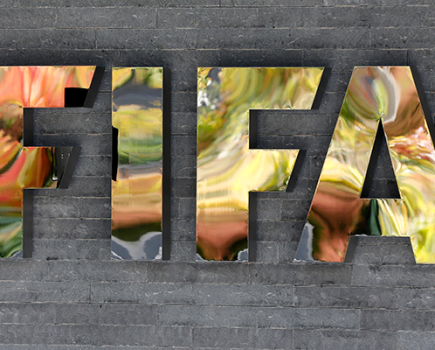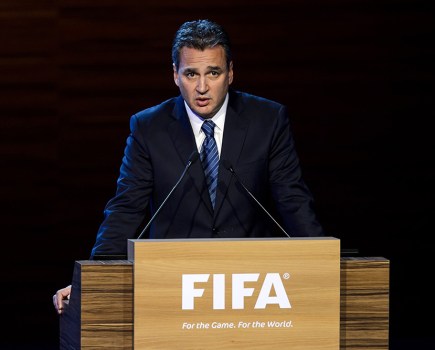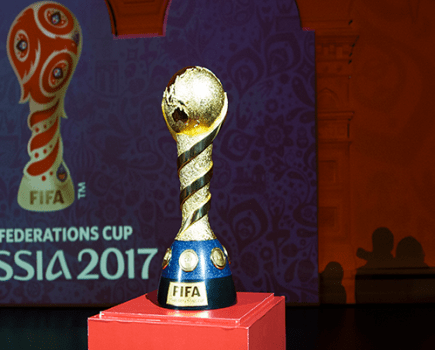 The mystery of the Neymar transfer could be the last straw which pushes international football towards a rationalisation of the transfer system.
The mystery of the Neymar transfer could be the last straw which pushes international football towards a rationalisation of the transfer system.
Both world and European federations FIFA and UEFA as well as international players’ union FIFPro admit concerns about not only agents and third party ownership but the entire system. The agreement with the European Commission which followed the Bosman Judgment in 1995 did not create solutions as much as new problems.
Third party ownership is a thorn in the game’s side because it is a dominant contractual factor in South America. Declaring it illegal is impractical. In any case, a footballer has the same right as a musician or politician to create a private company to take care of his non-football earnings.
One long-standing irritant is the game’s ‘modesty’ over transfer fees. The selling club invariably leaks a larger fee than the buying club which raises the suspicion that a bundle of cash is disappearing down the middle into someone’s pockets.
In no case has uncertainty over the fee been greater than Neymar’s transfer from Santos to Barcelona last summer. Or, to be precise, Neymar’s footballing playing contract.
The mystery has played into the hands of opponents of Barcelona president Sandro Rosell. Already he was being assailed by critics of his relationship with former Brazilian football supremo Ricardo Teixeira, of his stake in the tickets resale company Viagogo and of the nature of Barcelona’s cosy business links with Qatar.
On top of all this Rosell has seen Leo Messi’s father accused of money-laundering in collusion with drugs cartels (denied) and the European Union launch an inquiry into whether Barcelona and other top Spanish clubs receive ‘illegal’ direct or indirect state aid over tax and social security liabilities.
Now Judge Pablo Ruz has given the club five days to provide the Catalan High Court with full documentation of Neymar’s contract and club accounts for the past three years. The petition has been lodged by Jordi Cases, a Barcelona socio who is alleging “misappropriation of funds.”
Rosell denies any wrongdoing either by him or by the club and has described the legal claim as not only “reckless and unfounded” but damaging to “the image and credibility of the club.”
The transfer had been three years in the making. Back in 2010 Barcelona and Real Madrid began competing in earnest. At one point Madrid president Florentino Perez believed he had reached agreement with Santos for a transfer after next year’s World Cup.
Barcelona then shifted the goalposts with a down-payment of €10m which, with other football factors, persuaded Neymar to move to Barcelona this past summer.
Coach ‘Tata’ Martino has brought on Neymar with care this season and that approach has been rewarded with the Brazilian exploding into goal-scoring form just as Leo Messi was forced out of action through injury. Neymar has scored nine goals in total this term but five in his last two games.
To that extent, and at such a rarefied level, the quasi-official €57.1m appears by comparison with Madrid’s €100m investment in Gareth Bale.
However, lingering uncertainty concerns the true nature of that investment.
Catalan media reported, when the deal was finally signed and sealed, that Barcelona paid €17m for the player’s contract and €40m to the company N & N (Neymar and Neymar), owned by the father and the player who controlled negotiations.
Santos have said that they also had to pay €9m on to an agency, DIS, involved in commercial ‘ownership’ of Neymar. This and other elements in the deal have led to claims that Neymar’s signing will cost at least €100m
Some of the difference is made up by €9m for an option on three other Santos players plus a guarantee of €13m from two friendly matches between the clubs. That leaves another €20m-plus which, Cases believes, has been guaranteed to Neymar over the length of his contract.
On that basis FIFPro’s complaint that the transfer system is “unfair to players, creates competitive imbalance and encourages third-party ownership” can be seen as both right and wrong.
South American clubs such as Santos often make a transfer as awkward as possible because they know they will receive only a fraction of the fee; it is in their financial interests to hold out as long as possible. FIFA’s introduction of a computerised transfer matching system has made such gamesmanship harder because selling clubs can no longer withhold release of the international transfer certificate.
Philippe Piat, now back in the saddle as FIFPro president, is a long-time critic of the transfer system. He says: “The transfer system fails 99pc of players around the world, it fails football as an industry and it fails the world’s most beloved game.
“Governing bodies, clubs and leagues claim the transfer system is necessary to ensure competitive balance, whereby in fact it creates a spiral of economic and sporting imbalance, which only benefits the richest one per cent of clubs and player agents.
“These legal and monetary shackles binding footballers to their current clubs can no longer be accepted and upheld.”
Piat’s views appear at odds with the dizzying manner in which a flood of players skim from club to club during the two transfer windows. The transfer frenzy suggests there are ways and means a-plenty for players to shake off these “shackles.”
General opinion within the game is that the power balance has tilted away from the clubs and that it is now players (and their advisers) who call the shots.
Greater transparency is essential . . . so the Catalan legal system can provide a helping hand if it can shine a light into the Neymar nonsense.






